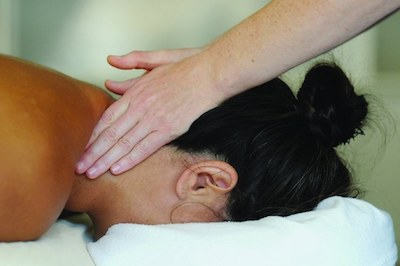- OSM instructor published in Integrative Medicine journal
An article on pain management, written by OSM instructor Marybetts Sinclair, describes how frequently used pain medication increasingly contaminates our environment. Her study was published in the Oct-Nov issue of Integrative Medicine: A Clinician’s Journal. Sinclair suggests that one remedy is the use of massage for managing pain. A summary of her article can be viewed at (you need to put Marybetts’ name in the search field): http://www.imjournal.com/index.cfm/fuseaction/archives.main. To read the entire article go to: http://imjournal.com/DIGITAL/2012/IM11_5/
About doing this research Marybetts writes:
My first inkling that prescription medications were creating a potential environmental problem, was when I read a newspaper account of research performed by the United States Geological Service. Their scientist sampled 139 streams in 30 American states, and found medications in 80% of all the streams! Then I read an article which told of antidepressants being found in detectable levels downstream from water treatment plants and that fish exposed to them did not react as quickly to predators, and some fish exposed to Prozac stopped eating and began hanging vertically in the water.
One of the scientists, a chemist, said “I was surprised by how often I was seeing these anti-depressants…Pretty much any water sample in the vicinity of a water treatment plant will test positive for some group of antidepressants.” At this point, I was not aware that pain medications were the most common medication found in our country’s water.
It was not until I read an Associated Press series that was published in 2008, that I really began to think about this. Over many months of research, the AP team found that the federal government doesn’t require testing and has not set any safety limits for drugs in water, and Americans are taking more drugs and flushing them unmetabolized and unused in growing amounts. A few other disturbing facts began to prod me to write an article for doctors, who are responsible for giving prescriptions to patients.
First, Americans are using painkillers in staggering numbers. Vicodin is the number one medication prescribed by American physicians (122 million prescriptions last year). Physicians hand out prescriptions freely: a pre-med student at a prestigious Oregon university told me recently that “if I go into the student health center on campus with any complaint at all, even a sore throat, the doctors there will ask me if I want a prescription for Vicodin.” Americans are only 4.6% of the world’s population, but they use 80% of the global opioid supply!
Second, the surge in addiction to these painkillers is causing such an increase in babies born addicted to them, that the American Academy of Pediatrics has called for every hospital nursery to be screen mothers for addiction and evaluate babies at risk for withdrawal symptoms.
Third, many scientist are very concerned about levels of medications in drinking water –they know that there are adverse effects on wildlife and they are worried about long-term effects on humans. Painkillers are a huge part of this problem, but there are many other types of drugs in our water as well.
As I read about these issues, I began to wonder why, with the excellent non-drug treatments for pain, that are now available, prescription medications would be the first resort. I have the privilege of working with some wonderfully skilled physical therapists, and as a massage therapist for almost 40 years, have seen how much relief can come from massage.
I have also seen many hospice patients get significant pain relief from acupuncture. Why start with a synthetic chemical,with possible bad effects on the environment, for a person with pain, when other effective strategies are available? So I began to write! I found 2 water treatment engineers who were happy to discuss these issues and lend me their expertise, checked out many books on pharmaceutical manufacturing from Oregon State University’s library, interviewed doctors and pharmacists, and read many more journal articles by scientists. I found a journal for doctors, that was interested in this slant on prescribing pain medication, an idea the journal said was new to them. About 100 hours later, I completed the article! Now I hope it has some impact, and makes some health professionals aware, that there are other excellent techniques to treat pain, even severe pain, with physical therapies. Bodywork is green!
You may remember, Marybetts is the Corvallis LMT who has shared with us in earlier blogs her experiences teaching massage in Indonesia and South Korea. Read about Marybetts’ work, or make contact with her, at: http://www.marybettssinclair.com/index.html




